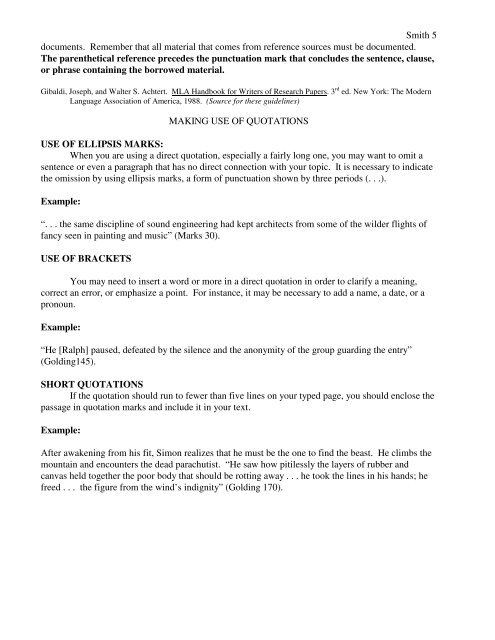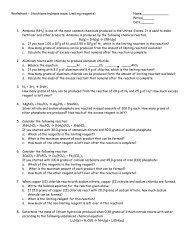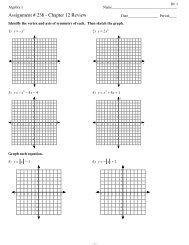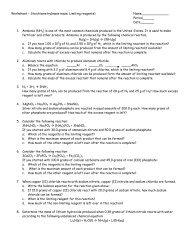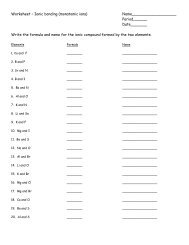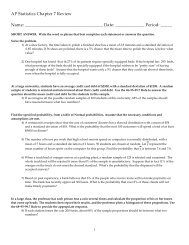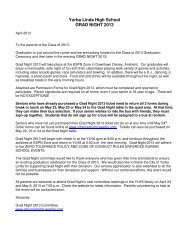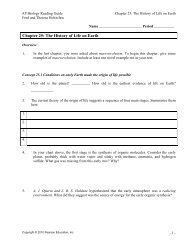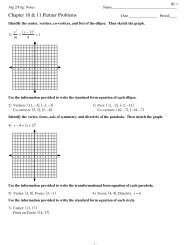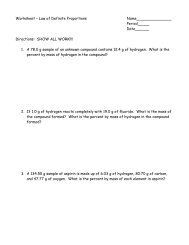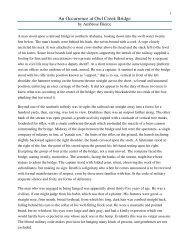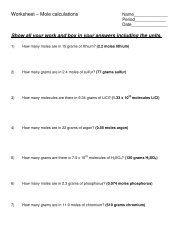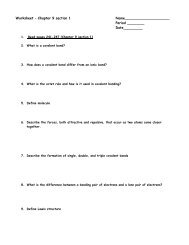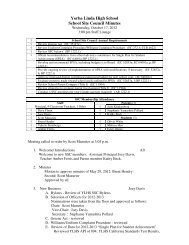YLHS Essay/Research Paper Style Guide
YLHS Essay/Research Paper Style Guide
YLHS Essay/Research Paper Style Guide
Create successful ePaper yourself
Turn your PDF publications into a flip-book with our unique Google optimized e-Paper software.
Smith 5<br />
documents. Remember that all material that comes from reference sources must be documented.<br />
The parenthetical reference precedes the punctuation mark that concludes the sentence, clause,<br />
or phrase containing the borrowed material.<br />
Gibaldi, Joseph, and Walter S. Achtert. MLA Handbook for Writers of <strong>Research</strong> <strong>Paper</strong>s. 3 rd ed. New York: The Modern<br />
Language Association of America, 1988. (Source for these guidelines)<br />
MAKING USE OF QUOTATIONS<br />
USE OF ELLIPSIS MARKS:<br />
When you are using a direct quotation, especially a fairly long one, you may want to omit a<br />
sentence or even a paragraph that has no direct connection with your topic. It is necessary to indicate<br />
the omission by using ellipsis marks, a form of punctuation shown by three periods (. . .).<br />
Example:<br />
“. . . the same discipline of sound engineering had kept architects from some of the wilder flights of<br />
fancy seen in painting and music” (Marks 30).<br />
USE OF BRACKETS<br />
You may need to insert a word or more in a direct quotation in order to clarify a meaning,<br />
correct an error, or emphasize a point. For instance, it may be necessary to add a name, a date, or a<br />
pronoun.<br />
Example:<br />
“He [Ralph] paused, defeated by the silence and the anonymity of the group guarding the entry”<br />
(Golding145).<br />
SHORT QUOTATIONS<br />
If the quotation should run to fewer than five lines on your typed page, you should enclose the<br />
passage in quotation marks and include it in your text.<br />
Example:<br />
After awakening from his fit, Simon realizes that he must be the one to find the beast. He climbs the<br />
mountain and encounters the dead parachutist. “He saw how pitilessly the layers of rubber and<br />
canvas held together the poor body that should be rotting away . . . he took the lines in his hands; he<br />
freed . . . the figure from the wind’s indignity” (Golding 170).


